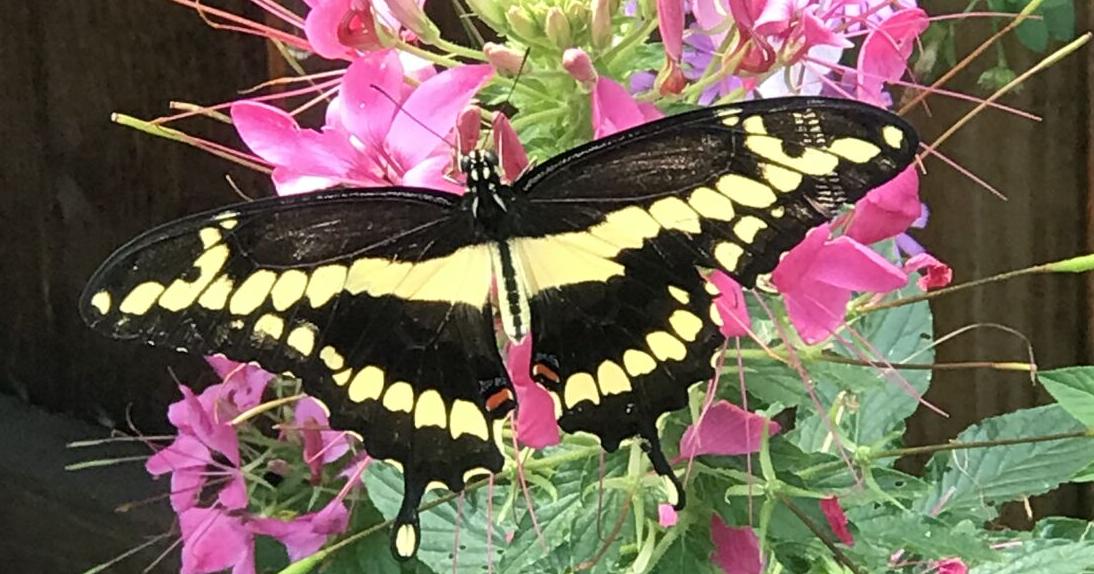You spell potato, Dan Quayle spells it P-O-T-A-T-O-E. Some of you may recall the Vice President’s 1992 gaffe making a 6th-grader misspell “Potato.”
In the VP’s defense, however, he was using an incorrect flash card prepared by a teacher. Quayle later wrote in his memoirs, “I can’t overstate how discouraging and exasperating the whole event was.” Meanwhile, the student got a new dictionary, a free trip to Puerto Rico, and an appearance on David Letterman’s show.
Clarence Schmidt
(Courtesy photo)
Exciting news…scientists amazingly agree that a potato is not a fruit, or a berry, or a nut, or a toaster. It’s a real vegetable.
They sometimes go by tator or spud. People who spend a lot of time sitting and staring into their garden are called “MediTators.”
(I know…it’s not exactly “You’ve Got Talent” material.)
“Potato” means “earth apple” or “ground apple,” and it’s native to South America. The plant is an herbaceous perennial in the nightshade family. Its scientific, binomial name is Solanum tuberosum.
They’re gluten-free and high in potassium. Food is an important part of a balanced diet.
There are about 5,000 potato varieties worldwide. According to Montana State University Extension, “the Incas of Peru were the first to cultivate potatoes around 8000 BC to 5000 BC.”
We are probably most familiar with the Russet, Red, White, Yellow, Blue/Purple, Yukon Gold, Fingerling, and Petite varieties. Collect the whole set.
Incidentally, the sweet potato is only a distant relative to the potato. According to the Idaho Potato Museum, “the sweet potato belongs in the same family as morning glories while the white potato belongs to the same group as tomatoes, tobacco, chile pepper, eggplant, and the petunia.” Quite an unusual group…it’s interesting to see what some family trees produce.
The museum also points out that “potatoes are classified by shape, skin color, and use. The long brownish ones are best for baking. Rounded or long whites are preferred for boiling and baking, and the small red ones are ideal for boiling. “New” potatoes, the small ones that are dug early before the skins have set, are best boiled or steamed”.
Potatoes are also used in the production of pharmaceuticals and vodka. I love potatoes.
Potatoes are tough survivors. They’re peeled, whipped, baked, dried, cooked, boiled, roasted, steamed, grated, mashed, frozen, scalloped, diced, sliced, and fried. Talk about a hard-knock life.
“After rice, wheat, and maize, the potato is the world’s fourth most significant crop. In 2020, world production of potatoes was led by China with 22% of the total. The US ranks behind India, Russia, and Ukraine.” Source: Food and Agriculture Organization of the United Nations.
The potato plant has large leaves and grows less than 2 feet tall. It contains the toxin solanine, which is the result of being exposed to too much light. Solanine produces a bitter taste and can cause illness if eaten in large quantities.
Store potatoes in a cool, dark place to prevent greening. Cut away any green skin before cooking them. I always carry a knife, but that’s just in case of cake.
Washing your potato before storing will speed up decay. Store them in a dry, dark, ventilated area, but not in a refrigerator. Temperatures above 50℉ will cause sprouting and shriveling.
Potatoes are pollinated by insects such as bumblebees, but a substantial amount of self-fertilizing occurs.
According to the Washington State Potato Commission, potatoes are grown from “seed potatoes” which are cut into pieces (sometimes left whole) and planted in the ground. These pieces of potato grow stems and roots from the “eyes”.
Some people are not motivated to garden, but are content to watch others. They are called “Speck Tators”. (Wow, that’s more groans than I expected.)
Potatoes are tubers that form on underground stems, which extend into stolons. The ends of the stolons can form more than twenty potatoes, of variable shape and size, weighing up to a pound.
They require full sunlight, and loose, slightly moist soil. The potatoes will rot in the ground if the earth is too wet. Potatoes are also sensitive to heavy frosts.
The leaves die back after flowering. About 100 days after they are planted, and two weeks after the leaves have faded away, potatoes are ready to harvest. Dig them up with a potato fork, a shovel that looks like a giant fork. Technically, they are still alive, but are in a dormant state.
According to the National Institutes of Health (gov), “the Irish Potato Famine, also known as the Great Hunger, occurred in Ireland between 1845 and 1849 when a mold known as Phytophthora infestans” caused a rapidly spreading disease. It was blamed for killing both the leaves and the edible roots of the potato plant”.
Potatoes also suffer powdery mildew, scab, and the leaf roll virus. Insects that transmit potato diseases or damage the plants include the Colorado potato beetle (thanks a lot Colorado), nematodes (worms), aphids, leafhoppers, thrips, mites, and of course, the Tuta absoluta (it’s a moth, not a disease).
Even though it was several decades ago, I vividly recall that it was a relative, Clarence VIII, who harvested a white potato. It was a groundbreaking event. He boiled it, accidentally dropped it on the floor, and proudly claimed to have invented the mashed potato. There was a parade and great fanfare in the town of 8 people.
According to NASA and the University of Wisconsin, in October 1995, the potato became the first vegetable to be grown in space. It was aboard the Space Shuttle Columbia. I’d like to see if Jeopardy contestants get that one right.
And I’d be remiss if I didn’t mention Mr. and Mrs. Potato Head, Brother Spud, and Sister Yam.
Get out those party hats and noisemakers. August 13 is National Potato (no “e”) Day.
Schmidt is a Poway resident with over 40 years of gardening experience.



:max_bytes(150000):strip_icc()/GreenBlue84byFarrowBall-6774d582ab9748c29fad4b4b902b8317copy-350e14d3e2b8488e951ac03dfd76ca0f.jpg)





